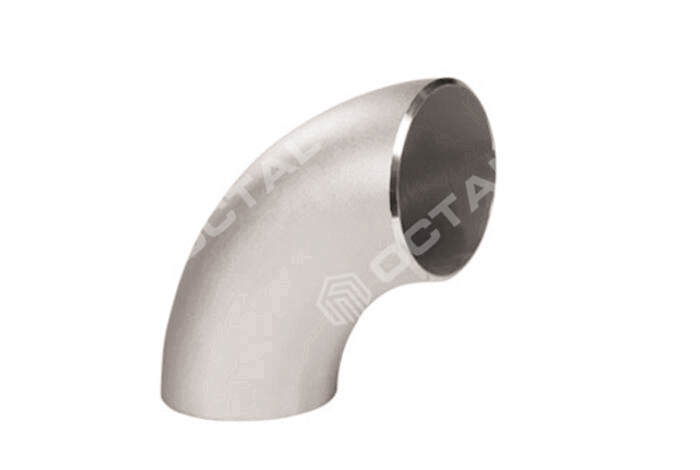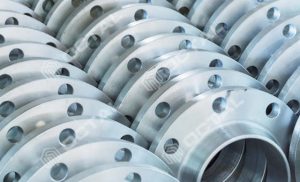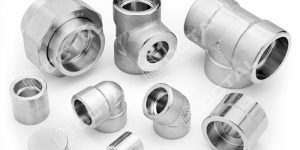Butt Weld Fittings Types and Material Specifications – Fast Guide

Butt weld fittings are one of the most popular connection types in pipeline systems. It has always been required in massive quantities in different industries, especially for the large diameter pipelines.
What is Butt Weld Fittings
Butt weld is used to connect pipe or fitting ends by welding. It is a weldable steel pipe fitting that allows for branching off, changing the direction of flow, attaching auxiliary equipment, or reducing the size of the pipe.
In the case of forged steel butt weld fittings, you can find them manufactured according to ANSI/ASME B16.9.
Check the differences between socket weld fittings.
Also known by welded pipe fittings
Butt weld fittings are also referred to as welded pipe fittings. When used in stainless steel and carbon steel, they offer certain advantages compared to socket weld and threaded fittings. While socket weld fittings are only available up to a specific size, butt weld fittings are available in sizes ranging from 1/2 inch to 72 inches.
Like other general categories of pipe fittings, Butt weld pipe fittings include:
Butt weld Elbow in 45 degree or 90 degree
Butt weld Tee and Reducing Tee, Reducer, Cap, Cross
Butt weld Elbow
Butt weld elbow is used to change the fluid direction in pipeline systems. There are two types: long radius (LR) and short radius (SR). Butt weld elbows are available in different degrees, including 45 degrees, 90 degrees, and 180 degrees. So, there are:
LR 45 degree butt weld elbow:
45-degree elbow with a long radius (1.5 x Diameter), used to change fluid direction by 45 degrees.
LR 90 degree elbow:
90-degree steel pipe elbow with a long radius (1.5 x Diameter).
SR 45 degree elbow: Short radius (1 x Diameter) elbow in 45 degree, change direction.
SR 90 degree elbow: Short radius (1 x Dia) elbow in 90 degree.
180 degree steel pipe tee
Elbows with a degree greater than 90 degrees are commonly referred to as steel bends. For example, LR/SR 180-degree bends.
The dimensions of butt weld elbows can be specified by the diameter (in NPS) and the thickness according to ANSI standards. For example, a sample specification could be LR 90-degree elbow with a 4-inch diameter and a thickness specified in schedule 40 or schedule 80.
Butt weld Tee
Butt weld tee (also known as an equal tee) consists of a 90-degree branch along with a straight pipe. It provides a connection point to install additional equipment to a pipeline. The ends of the tee can be welded to the same sides of the pipe, while the 90-degree branch is left open for welding another pipe or device.
Butt weld Equal Tee
Butt weld Reducing Tee
The reducing tee has the same structural design as the equal tee, but the 90-degree branch has a smaller size than the diameter of the straight pipe. This allows it to be used for installing equipment or a pipe with a smaller size.
Butt weld Reducer
There are two types of reducers, concentric and eccentric, which are used to adjust the fluid flow rate and speed. A concentric reducer is welded by connecting a larger diameter pipe on one end and a smaller diameter pipe on the other end. An eccentric reducer, on the other hand, is welded in a way that creates an offset between the centerlines of the two pipes.
Concentric Reducer: Eccentric Reducer:
Common material types of butt weld fittings
Similarly to socket weld fittings, butt weld fittings are available in various types, such as butt weld elbow, tee, outlets (olets), reducers, and caps. These are among the most commonly used butt weld fittings and are specified based on the schedule of the pipe and nominal pipe fittings.
Body material
Butt weld fittings are made from different body materials, including alloy, stainless, and carbon steel. They are typically manufactured using welded or seamless pipes as the starting material. The manufacturing process involves forging and utilizing multiple processes to achieve the desired shape of fittings such as tees and elbows, among others.
Stainless steel butt weld fittings usually in thin thickness
Similar to normal pipes, butt weld fittings are available in different schedules, ranging from Schedule 10 to Schedule 160. In the case of stainless steel fittings, they are more commonly used due to the cost advantage they offer. Schedule 10 fittings are also more commonly found in stainless steel fittings.
Carbon steel butt weld fittings
Carbon steel butt weld fittings are typically made from body materials in ASTM A234 WPB (most commonly) and WPC, MSS-SP-75 WPHY. The thickness usually is usually in line with schedule 40 steel pipe fittings, STD, or 80. The pressure class can range from 1500 psi, 2500 psi, 3000 psi, 6000 psi to 9000 psi.
Alloy steel butt weld fittings
Alloy steel butt weld fittings are typically made from materials such as ASTM A234 WP1, WP5, WP9, WP11, WP22, WP91, and so on.
Classified by dimensions
The dimensions of butt weld pipe fittings are based on the pipe dimensions standard ANSI B36.10 and B36.19.
Diameter range: 1”, 2”, 3”, 4”, 6”, 8” and up to 36”.
Thickness range: Schedule 10, schedule 40, schedule 80, XS, XXS and SCH 160
Where fitting dimensions of butt weld fittings are concerned, this would consist diameter in NPS and thickness in schedule.
Concentric reducers, eccentric reducers, long radius elbows, and tees are commonly used in construction projects as they play an important role in branching off, changing the direction of flow, or mechanically joining equipment to the system. Butt weld fittings are sold in nominal pipe sizes, which are determined by the specified pipe schedule.
How a butt weld fitting is made
This type of pipe fitting is typically manufactured using a process called hot forming. The process involves bending the pipe and then shaping it into the desired form. The starting material for these fittings is a pipe that is first cut to the required length. It is then heated and molded into specific shapes using dies. Additionally, heat treatment is performed to achieve the desired mechanical properties and to remove any residual stresses.
Benefits of butt weld fittings
• The welded connection ensures a stronger and more secure connection.
• The continuous structure of the metal adds to the overall strength of the piping system.
• When butt weld fittings are matched with the appropriate pipe schedules, they provide a seamless flow inside the pipe.
• They offer the flexibility of different turn radii by using Long Radius, Short Radius, or 3R elbows.
• Butt weld fittings are typically more cost-effective compared to socket weld or threaded fittings.
• These fittings are available in Schedule 10, providing a thinner wall option.
• Butt weld fittings are commonly used in Schedule 10 and Schedule 40 configurations.
Butt weld fittings have beveled ends treatment
All butt weld fittings have beveled ends in accordance with ASME B16.25 standards. This allows for full penetration without the need for additional preparation.
These types of fittings are commonly used with stainless steel, carbon steel, alloy steel, aluminum, nickel, and high yield materials.
Functions of butt weld pipe fittings
Butt weld pipe fittings are essential components for joining stainless steel and carbon steel pipes. They enable the assembly of pipes, valves, and equipment onto the piping system. In addition to complementing pipe flanges in any piping system, butt weld fittings also allow for:
• Changing the direction of flow in a piping system
• Joining or connecting equipment and pipes
• Providing access, branches, and takeoffs for auxiliary equipment.
An example of this would be using a butt weld pipe fitting, such as a concentric reducer, to reduce the size of a pipe. This fitting would then be welded to a weld neck flange and connected to equipment.































